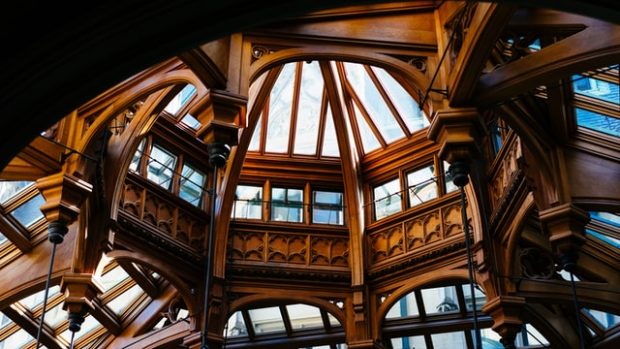The roof truss is a framework consisting of rafters, posts, and struts that support the roof. Without them, the roof would collapse under its own weight. Trusses are also used in bridges and other structures where long spans need to be supported. The struts are diagonal members that provide additional support for the roof. Roof trusses are an essential part of any building with a pitched roof.
The functionality of Roof Trusses
-
- The form and stability of the truss allow it to support the weight of the roof without sagging or collapsing.
- The rafters are arranged in a triangular shape, with the peak of the triangle at the top of the truss.
- The rafters are connected to each other at joints called nodes. Nodes are also connected to the posts, which run vertically from the node to the bottom of the truss.
Types of Roof Trusses
There are a variety of roof trusses available to suit the needs of different structures.
-
- The most common type of roof truss is the pitched truss, which is used for roofs with a slope. Pitched roof trusses typically have a triangular shape and are supported by rafters or horizontal members.
- Another common type of roof truss is the cantilevered truss, which is often used for balconies and decks. Cantilevered trusses are supported at one end and extend outwards from the support point.
- In addition, there are also flat roof trusses, which are used for structures with a flat or nearly flat roof. Flat roof trusses typically have a less complex design than pitched or cantilevered trusses and are therefore less expensive to construct.
Advantages and Disadvantages of Roof Trusses
Roof trusses are an increasingly popular choice for home builders, says Howzer Property Management, and it’s easy to see why.
The advantages
- Trusses offer a number of advantages over traditional roof framing methods, including increased strength, reduced weight, and improved resistance to wind damage.
- In addition, trusses can be manufactured in a variety of shapes and sizes to suit any design, and they can be easily installed by a certified contractor.
The disadvantages
However, there are also a few potential disadvantages to consider.
-
- Trusses typically cost more than conventional roof framing methods, and they can be more difficult to repair if they’re damaged.
- In addition, because trusses are mass-produced in factories, it can be difficult to find one that perfectly matches the dimensions of your home.
Ultimately, the decision of whether to use trusses or traditional framing methods depends on a variety of factors, including cost, appearance, and functionality.
Fink vs. Raised Tie Roof Trusses
When it comes to roof trusses, there are two main types: Fink and raised tie. Both types of trusses have their benefits and drawbacks, so it’s important to weigh all your options before making a decision.
-
- Fink trusses are the more traditional option, and they get their name from their V-shaped design.
- Raised tie trusses, on the other hand, have a more rectangular shape and are often used in more modern construction.
- Fink trusses are typically cheaper to construct than raised tie trusses, and they’re also easier to repair if damaged. However, they’re not as strong as raised tie trusses, and they don’t provide as much support for heavy loads.
- Raised tie trusses are more expensive to build, but they’re stronger and can better support heavy loads. They’re also more difficult to repair if damaged.
Endnote
Ultimately, the type of roof truss you choose should be based on your specific needs and budget. If you’re looking for a strong and durable option that can support a heavy load, raised tie trusses are the way to go. However, if you’re working with a limited budget, Fink trusses are a more affordable option.
Read More:


